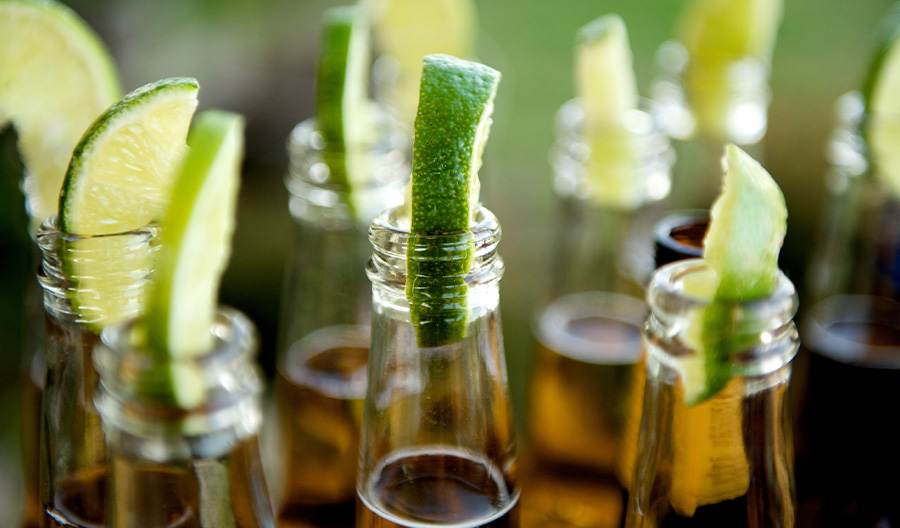Ask a modern American what Mexican beer means to them and they’ll reply not by explaining a flavor profile, but by describing a feeling. They’re beers for hot weather. Beers that go great with food. Beers that necessitate a lime. A cerveza you can drink a lot of.
But there’s a lot more to Mexican beer and brewing history than those simplifications.
What Is Mexican Beer?
As with many countries’ brews, Mexican beer was created and developed through an amalgam of cultures. Its history goes back quite a long way: Evidence suggests that Mesoamericans had already discovered fermented beverages before the 16th century, and, according to The Economics of Beer, the Aztecs made a sort of beer produced from sprouted kernels of maize.
The arrival of Hernán Cortés in 1519 and the ensuing Spanish conquest of the Aztec Empire, however, took beer in Central and South America in an entirely different direction. The first official European-style brewery was opened in New Spain by one of Cortés’ soldiers, Alfonso de Herrero, in the 1540s, probably in the what’s today south of Mexico City. It was heavily taxed (in favor of native intoxicants) and expensive to make, due to the lack of native wheat and barley. But it did give locals a taste for the stuff. As colonial restrictions waned, beer production and consumption began to rise.
By the latter portion of the 1800s, German immigrants had begun to immigrate to Mexico as part of a Second Mexican Empire, which was led by Austrian archduke Maximilian I of the House of Habsburg-Lorraine. He brought with him his own brewer, who produced the sorts of Vienna-style lagers that no longer really exist in Austria today, but have become synonymous with a certain type of Mexican beer.

A burgeoning railroad system allowed Mexicans to import brewing machinery and malt from the United States—as well as American beer, a new competitor to their homegrown stuff. Yet, by 1918, there were 36 beer producers in Mexico. The beginning of America’s Prohibition a couple years later would only help the Mexican beer industry, with many residents from the States crossing the border to drink.
As with the beer industry in many other countries, competition would lead to consolidation and closures. By the second half of the 20th century, there were only two major brewers left.
Whatever the case, Mexican beer had become a dominant force. Today, Mexican beers account for 80% of all beer imported into America.
The Mexican Craft Beer Movement
The craft beer boom began in America in the early-1980s before spreading to Canada, South America, Europe and Asia, but it would take a bit longer for Mexico to capitalize on the trend.
Not only was it hard to produce an artisanal beer here—Mexico doesn’t grow its own hops, and its barley production is far less than what the U.S. and Canada grows—but there wasn’t exactly a Mexican consumer willing to pay five to six times the cost of a macro beer
The country’s earliest craft breweries and brewpubs began to appear in Mexico at the start of the 21st century, but it wasn’t until around the mid-2010s that craft beer began to take off in Mexico, and only because the government had finally eased restrictions. Before then, bars had to pay up to $50,000 to serve beer, but they could get an interest-free loan if they signed a contract agreeing to carry the Big Beer brands exclusively. In 2013 the law was changed to allow bars to sell craft beer even if they’d previously signed an exclusivity contract.

